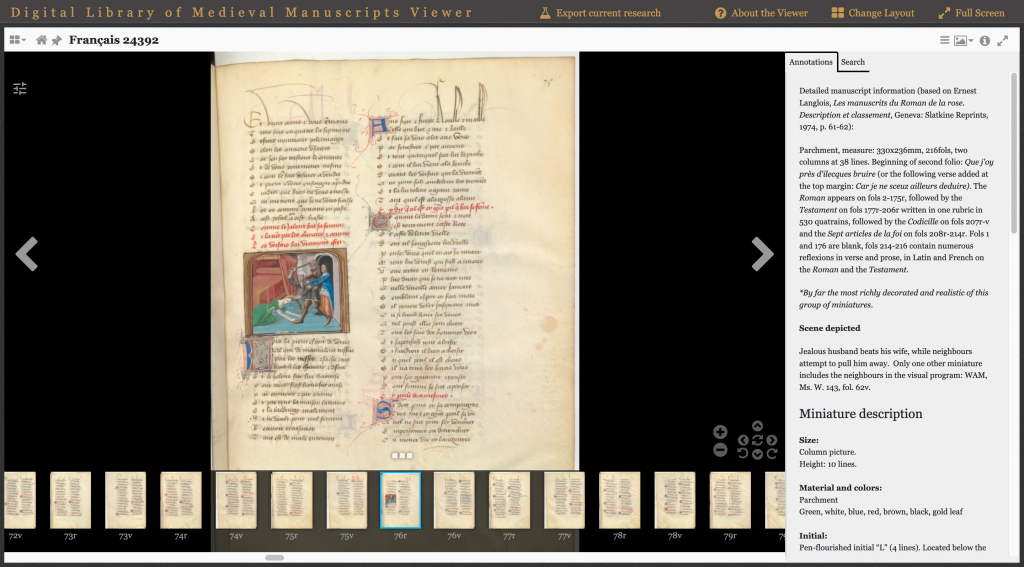Though the project now known as the Digital Library of Medieval Manuscripts (DLMM) originated at Johns Hopkins University back in 1996, it has not suffered the same fate as so many other “legacy” digital humanities initiatives. Rather than gathering dust and lapsing into obsolescence, the DLMM continues to improve and innovate in ways that would have been unthinkable a quarter of a century ago.
Following an overhaul of the outer layer of the site last summer, the DLMM received some important upgrades to the International Image Interoperability Framework (IIIF) viewer. With this viewer, users can now explore a new set of approximately 100 annotations to numerous Roman de la Rose manuscript images furnished by longtime DLMM collaborator, Professor Christine McWebb. The tireless work of the Digital Research and Curation Center at Hopkins has made it possible to locate these annotations and other features more efficiently by means of the individuation of manuscript pages in the URLs themselves, which users can now save and share without having to scroll through entire collections, as with with the image below:

Our hope is that this feature will make it easier in turn for instructors of medieval French, art history, digital humanities, and many other disciplines at Hopkins and around the world to incorporate the DLMM into their teaching. To provide further encouragement to this end, we recently commissioned Professor Emeritus Stephen Nichols, the DLMM’s original principal investigator, to write a series of teaching case studies, the first two of which, are now available at the designated area of the site. We have further committed to expanding access to the DLMM by hiring Manon Pagé, a PhD candidate in the French section of the Department of Modern Languages and Literatures and a native French speaker, to supply French translations for components of the DLMM’s outer interface that have previously lacked them.
